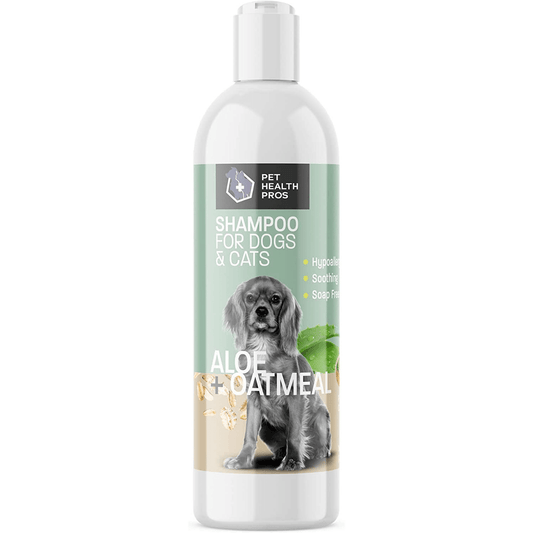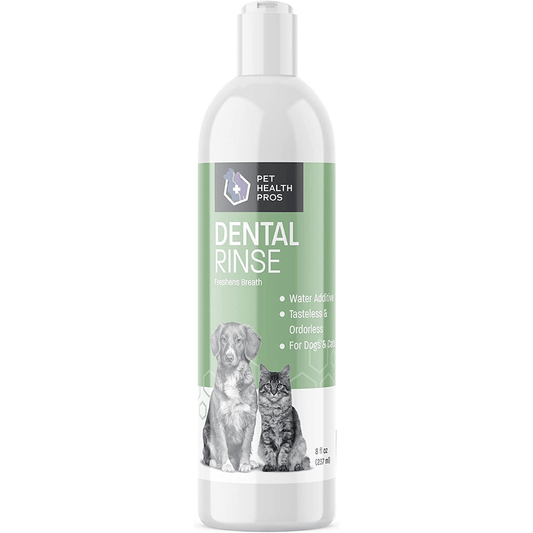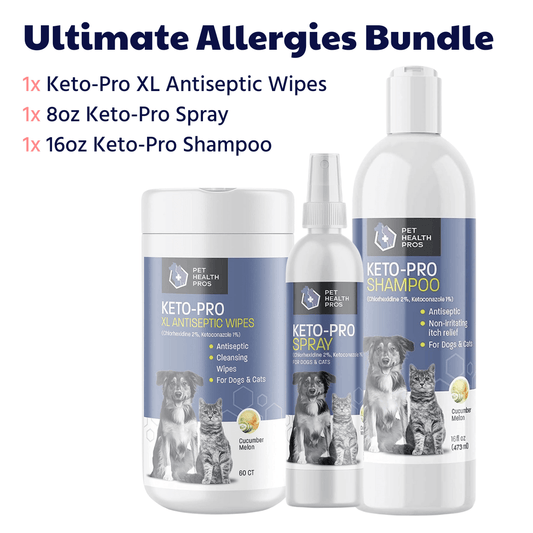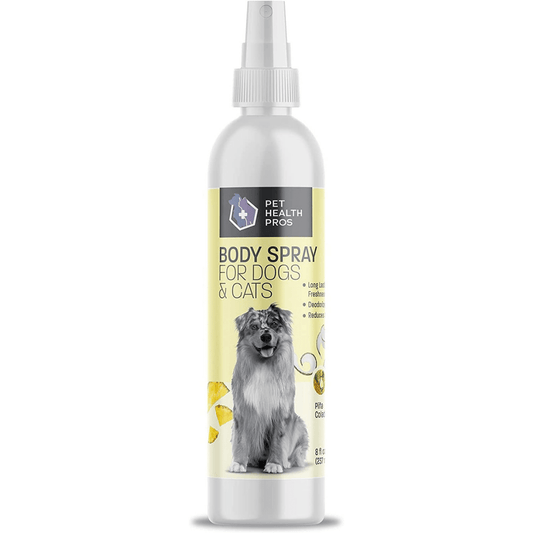Many dog owners are turning to natural solutions for various health concerns, including anal gland health. Join Pet Health Pros as we explore dietary adjustments, supplements, and other natural methods that can promote optimal gland function.
It's essential to ensure your dog's anal gland health. These little sacs near their rectum can become uncomfortable if not taken care of.
Here, we'll explore natural solutions to keep your pup's bum in tip-top shape.
First, it's important to understand why these glands exist. They produce a strong-smelling fluid that dogs expel when scared or pooping. Sometimes they get blocked or infected, causing irritation and infection. Checking and expressing the glands can help prevent this.
One way to help is adding fiber to their diet. High-fiber foods such as pumpkin puree or psyllium husk powder encourage regular bowel movements, keeping the glands clear.
Exercise also plays a role. Physical activity stimulates bowel movements, reducing the risk of blockage or inflammation. Make sure your pup gets enough playtime and walks!
There are also supplements that target anal gland health. Omega-3 fatty acids have anti-inflammatory effects and can reduce swelling and discomfort. Ask your vet for advice on what's right for your dog.
If you spot any unusual behavior such as licking or scooting, it could mean an issue with the glands. Don't wait - seek vet advice quickly.
These natural solutions will keep your pup's anal gland health in perfect condition. A happy bum means a happy pup!
Understanding Anal Glands in Dogs
To understand anal glands in dogs, delve into what they are and why dogs have them. We'll explore the purpose and function of anal glands, shedding light on this often misunderstood aspect of a dog's anatomy. Discover the importance of these glands and how they contribute to your furry companion's overall health and well-being.
What Are Anal Glands?
Dogs have small sacs, found on either side of the anus. These anal glands produce a really smelly fluid. Each dog has their own unique scent. The fluid holds information about the pup, like age, sex and mood. When a pup poops or gets scared, the muscles around the glands push out the fluid.
Some breeds of dogs have bigger or more active anal glands than others. For example, Chihuahuas need regular gland expression to stop pain or infection.
It's vital for owners to learn about their pet's anal glands and how to look after them. Regular grooming and observation can help spot any issues, like infection or blockage.
Why Do Dogs Have Anal Glands?
Dogs have anal glands due to their evolutionary development. These glands, located near the anus, secrete a strong-smelling substance. This helps dogs mark their territory and communicate with other canines. It also lets them establish dominance or ownership of certain areas.
The anal glands also play a major role in digestion. When a dog defecates, the pressure applied to the glands releases fluid. This leaves a distinctive scent, which helps dogs identify each other.
Not all breeds have equally active anal glands. Smaller breeds usually need regular expression, while larger breeds rarely have issues with them. Pet owners should check up on and maintain anal glands for their dog's health.
It's interesting to note that dogs' ancestors relied on scent marking and communication for survival. As pack animals, they needed an efficient way to establish boundaries and hierarchical order. Anal glands emerged as an evolutionary advantage, allowing complex social interactions.
Understanding why dogs have anal glands helps pet owners better take care of their four-legged friends. Ensuring proper care of these glands keeps your dog healthy and enables successful communication with other canines.
Common Problems With Anal Glands
To address common problems with anal glands, equip yourself with natural solutions for optimal anal gland health in dogs. Recognize the signs of anal gland issues in dogs and understand the significance of regular anal gland maintenance as preventive measures. This knowledge will enable you to tackle anal gland concerns effectively and keep your furry friend comfortable.
Signs of Anal Gland Issues in Dogs
Watch out for signs of anal gland issues in dogs! These include: frequent licking/biting of the anal area, scooting/dragging their bottom on the ground, swelling/redness around the anus, and a foul odor.
It's important to get veterinary advice quickly if your dog shows any of these signs. Also, analyzing your dog's diet and promoting regular bowel movements can help. Plus, untreated anal gland problems can become more serious, like abscesses or infections. So, act fast to ensure your pup's health and well-being.
Fun Fact: Small dog breeds are more likely to have anal gland issues than larger breeds, according to PetMD.
The Importance of Regular Anal Gland Maintenance
Regular maintenance of anal glands is key for pet wellness. These tiny glands, both sides of the anus, serve vital roles, like marking territory and lubricating stool. Ignoring their care can lead to troubles.
- Prevent Infection: Emptying the anal glands often keeps bacterial or yeast infections away, so no discomfort or pain for your pet.
- Minimize Discomfort: Expressing the anal glands stops irritation, itching, or anal gland impaction from happening.
- Escape Foul Smell: Anal gland secretions have a smell that's bad for humans and pets. Regular maintenance helps keep this odor away.
- Aid Better Digestion: Anal glands not working properly can interrupt digestion. Routine maintenance ensures stools move easily.
Certain breeds are more prone to anal gland issues, so owners should watch their pets and see a vet if any signs of discomfort or abnormal behavior show up.
Natural Solutions for Anal Gland Health
To ensure optimal anal gland health in your furry friend, turn to natural solutions. Addressing the issue with diet and nutrition, fiber supplements, regular exercise, proper hygiene, cleaning, and herbal remedies can offer effective relief. Embrace these sub-sections as a comprehensive approach to maintain your dog's anal glands in a healthy condition.
Diet and Nutrition
To keep your pup's anal glands healthy, the right diet is key. Feed them nutritious foods for overall digestive well-being. For prevention, high-fiber meals help promote regular bowel movements.
Include omega-3 fatty acids, too. These anti-inflammatory fats reduce inflammation and discomfort in the area. Salmon and fish oil are great sources.
Avoid processed foods with additives and fillers. These can cause indigestion and constipation, upping the risk of anal gland issues. Choose natural, organic ingredients instead.
Pumpkin is also beneficial. This veggie's high fiber content aids regular bowel movements, preventing blockages or secretions.
Hydration is essential. Make sure your pup always has access to fresh water.
By making these dietary changes, you're not only supporting general health, but also targeting any potential anal gland problems. A balanced diet with quality ingredients leads to smoother movements and alleviated discomfort.
Remember to consult a vet first to make sure the diet fits their needs and conditions. With the right approach, you can keep your pet happy and free from anal gland issues.
Fiber Supplements
Fiber supplements provide many benefits for pet digestion. For instance, they add bulk to stool, aiding regular bowel movements and preventing constipation. Plus, they soften stool, making it easier to pass, reducing the risk of anal gland problems. Most diets lack adequate fiber, so supplements are essential for optimal digestion.
These can also reduce the likelihood of anal gland impaction. By regularly supplementing, pet anal glands stay healthier, reducing the risk of abscesses or blockages.
These supplements also contain key nutrients which promote a healthy digestive system, with no harmful side effects. This was noticed by a veterinarian, who observed that pets with recurrent anal gland issues had improved when fiber supplements were added to their diet. After further research, it was proven that these supplements had a positive impact on anal gland health. Thanks to this groundbreaking discovery, many pets now live happier and more comfortable lives.
Regular Exercise
Physical activity is a must for anal gland health. It keeps the muscles around the anus toned, aiding the glands' proper functioning. Here are some reasons why exercise is key:
- It helps in having regular bowel movements. This stops constipation, which can lead to issues with the glands.
- Activity boosts blood flow in the body, including the anal area. This supports gland health.
- Exercise helps manage weight, avoiding too much pressure on the glands.
- Moderate exercise strengthens the pelvic floor muscles, giving support to the area and reducing strain on the glands.
Exercise is only part of anal gland health. A balanced diet and good hygiene are also essential.
Proper Hygiene and Cleaning
Hygiene and cleaning are essential for your furry friend's anal gland health. Here are some key points to keep in mind:
- Regular Cleaning: Use gentle pet wipes or a damp cloth to clean your pet's rear end area regularly. This removes any dirt or bacteria build-up around the anal glands.
- Avoid Over-Cleaning: Clean regularly without going overboard. This helps keep natural oils and the balance of bacteria in the anal gland region intact.
- Dietary Considerations: A fiber-rich diet helps regulate your pet's bowel movements, preventing constipation and other anal gland issues.
- Seek Professional Help: If your pet shows signs of discomfort, swelling, or excessive licking around the anal glands, consult a vet for specific guidance.
Maintaining proper hygiene and cleaning practices is key for your pet's anal gland health.
Herbal Remedies
Chamomile? It's anti-inflammatory. So it can reduce swelling and ease discomfort in the anal area. Witch Hazel? It's astringent so it can shrink swollen tissue and take away itching and irritation. Calendula? It has antimicrobial and healing properties, so it can promote tissue repair and keep infection away from the anal glands.
These herbal remedies are milder than pharmaceutical options and have fewer side effects. They can be topically applied or taken in various forms like teas, tinctures, or supplements.
Consult a holistic vet before using herbal remedies. They'll help you choose the right herbs and doses for your pet's needs. Also, be consistent. Results won't happen overnight.
Step-by-Step Guide to Expressing Anal Glands at Home
To successfully express your dog's anal glands at home, follow this step-by-step guide. Prepare for the process by gathering necessary supplies. Position your dog appropriately to ensure comfort and accessibility. Locate the anal glands with precision. Learn the technique to express the glands safely. Finally, clean up any messes and ensure your dog's comfort post-procedure.
Preparing for Expressing Anal Glands
Prepping for expressing anal glands is key for pet health. By following a few steps, you and your furry friend can have a safe and comfy process.
- Gather latex gloves, lube, and paper towels. These items will help create a germ-free space and prevent any unease.
- Find a tranquil and brightly-lit site. This is essential for your pet to feel secure. It should also make it simpler to express their anal glands with no extra worry.
- Position your pet accurately. Depending on size, you may need to put them on a table or have them stand by a wall. Making sure they are firm and safe will help you keep control.
- Take measures to relax your pet. Gently rub their back and talk softly to soothe them. This will reduce tension and make it easier to express their anal glands.
- Always get advice from your vet before trying to express anal glands at home. They can give directions made for your pet.
By collecting supplies, making a serene atmosphere, placing your pet rightly, and using calming methods, you can prepare for expressing anal glands at home. These tips work since they ensure cleanliness, reduce stress, and maximize comfort during this procedure ensuring both safety for you and wellbeing for your beloved pet.
Step 1: Positioning Your Dog
Positioning your pup right is a must when expressing anal glands at home. Here are 3 steps to properly do so:
- Find a comfy, steady surface. Look for a flat area where both you and your doggo can feel comfortable. This could be a tabletop, grooming table, or the floor with a non-slip mat. The stability will help your pup feel secure.
- Position the pup's hindquarters. Guide your pup into either a standing or lying down position, depending on their size and comfort level. Make sure their backside is easily accessible for you to reach without causing any discomfort.
- Keep them calm and relaxed. Before you start, create a relaxed atmosphere for your pup. Use reassuring words and gentle touches to help them chill. You can also provide treats or distractions to keep their attention away from the procedure.
Remember not to rush through the process as each step is important for your pup's comfort and effectiveness. Be aware of any signs of distress or pain from your pup during the anal gland expression. If they show any, seek veterinary help right away.
Understanding how to position your pup properly is essential when expressing anal glands at home. It not only ensures successful results but also contributes to their overall wellbeing.
It used to be that owners would only turn to professional groomers or vets for expressing anal glands. However, with more pet care knowledge and resources available online, more owners are learning how to do this at home, with proper guidance. This has led to better anal gland health for pups and more informed owners.
Step 2: Finding the Anal Glands
Get your pet's anal glands in check! These 6 steps will help you do it:
| 1. Lift their tail to reveal the anus. |
| 2. Look for two small openings either side of the anal opening - these are the anal gland ducts. |
| 3. Feel inside the anus - the glands should feel like small, pea-sized sacs. |
| 4. Put gentle pressure on one side of the anus to empty the gland. |
| 5. Do the same to the other side. |
| 6. Take note of any odd smells or discharge - this may indicate a problem. |
Expressing anal glands isn't always easy. If you're not sure, ask a vet for help. Taking care of your pet's anal glands is vital for their health and wellbeing. Don't let them suffer - take action today!
Step 3: Expressing the Anal Glands
Expressing Anal Glands, a critical step. It needs proper technique and caution. Follow these 3 simple steps:
- Get the supplies like latex gloves and lubricant.
- Lift your pet's tail and press both sides of the anus.
- Squeeze the area around the anus gently, to release the secretions.
Remember, not all pets need regular anal gland expression. But some may feel discomfort or get infected if glands are impacted.
Interesting fact - expressing anal glands isn't something new. It has been done for centuries. Wild animals did it while marking territory and communicating with others. Humans started doing it to keep our furry companions healthy.
Step 4: Cleaning Up
Expressing anal glands at home is a process that should end with proper hygiene. For comfort and safety, here's a 3-step guide to clean up:
- Dispose of used gloves and tissues in a sealed bag. This stops bacteria and odor from spreading.
- Gently clean the area around the rectum with a mild soap and warm water solution. Be gentle as your pet may be sensitive.
- Dry the area thoroughly with a soft towel or cotton pad. Moisture can cause irritation or infection, so be sure it's completely dry.
Also, wash your hands with soap and water when finished. This ensures safety for both you and your pet.
Good hygiene is key to avoiding discomfort and complications for your pet. Follow these steps to give relief and maintain overall well-being. Take control of your pet's health today!
When to Seek Veterinary Assistance
For a proper diagnosis and treatment of anal gland issues in dogs, veterinary assistance is a must! Taking action fast is key when recognising signs of anal gland problems - neglecting to do so can lead to complications and make your furry pal uncomfortable.
Look out for:
- Excessive licking or biting of the rear end.
- An unusual odour coming from the rear end.
- Swelling around the anus.
- Scooting on the floor or rubbing bottom against furniture.
- Bloody discharge or unusual colour in defecation.
- Pain or discomfort during bowel movements.
Not all dogs will show signs of anal gland issues - some may suffer silently until complications arise. This emphasises the importance of regular check-ups with a vet. Be attentive to any physical abnormalities or changes in behaviour that may indicate underlying problems. Seeking professional guidance right away will ensure your pet's well-being.
According to Veterinary Partner, certain breeds are more prone to experiencing anal gland difficulties. Small breeds such as Chihuahuas and Shih Tzus have higher rates than larger breeds.
Final Thoughts
Nature offers a wealth of remedies for our canine companions. By incorporating the holistic insights provided by Pet Health Pros, you're taking an informed step toward your dog's overall health and comfort.
Let's summarize the tips for keeping your pup's anal glands healthy. Regular expression, dietary changes, increased hydration, exercise and external support are all key.
1. Regular Expression: This is when you manually empty the glands. Have a vet do it or follow guidance to avoid injury. This helps stop blockage and discomfort.
2. Dietary: A diet high in fiber firms up stools, reducing the risk of blockage.
3. Hydration: Water intake softens the stool, making it easier for the anal glands to release naturally.
4. Exercise: Keep your pet active for overall health and wellness, which impacts anal gland function.
5. External Support: Use specialized wipes or sprays to address bacteria, odor, etc.
Adding these practices to your routine can dramatically improve your dog's anal gland health. Be proactive and attentive for your pet's comfort and happiness. All the suggestions work together to help your pup maintain optimal wellbeing.
Frequently Asked Questions
1. What are anal glands in dogs?
Anal glands in dogs are small sacs located on either side of their anus, which contain a strong-smelling liquid that helps them mark their territory and communicate with other dogs.
2. How do I know if my dog's anal glands need attention?
If your dog is excessively licking, scooting, or dragging its bum on the ground, it may indicate that its anal glands are full or impacted and need to be expressed.
3. Can I express my dog's anal glands at home?
While it is possible to express your dog's anal glands at home, it is recommended to have a professional groomer or veterinarian perform the task to avoid any potential complications or injuries.
4. Are there any natural remedies to promote anal gland health in dogs?
Yes, certain dietary changes can help promote healthy anal glands in dogs. Adding more fiber to their diet, such as pumpkin or bran, can firm up the stools and facilitate natural expression of the glands.
5. How frequently should I have my dog's anal glands expressed?
The frequency of anal gland expression varies for each dog. Some dogs may never require manual expression if their glands are healthy and functioning properly, while others may need it done every few weeks. Consulting with a veterinarian will help determine the best schedule for your dog.
6. What are the signs of an anal gland infection in dogs?
Signs of an anal gland infection in dogs include swelling, redness, pain, discharge, or a foul odor around the anal area. If you notice any of these symptoms, it is important to seek veterinary care as soon as possible.








